- Home
- T. J. English
American Gangsters Page 5
American Gangsters Read online
Page 5
As Johnny explains it, the young man was at a Denham Town “moulood,” or yard party, the previous night. A gang of thugs associated with a rival political faction crashed the moulood, touching off a violent rumble. Surprisingly, no one was killed.
As he speaks, Johnny becomes more upset—and forthcoming—about living conditions in the ghetto. “De cost a livin’ is killin’ dese people,” he laments. That day, the price of basic foods such as milk, flour, and butter had gone up once again. Along with everything else, malnutrition was a major concern, especially with the “lickle pickneys,” or young children. “I’d like fe dem tings to change,” he says pleadingly, “an’ me know dem must change. Our youts is comin’ up, an’ we can’t continue livin’ like dis.”
Despite the violence, Johnny refuses to bad-mouth the rude boys, or “badmen,” as they are called in Kingston. If nothing else, the badmen are a force the establishment must reckon with, which gives them a certain stature in the ghetto. To some, they are seen as the inheritors of Afro-Jamaica’s rebellious history, which began with the maroons, the seventeenth-century runaway slaves who refused to submit to their colonial masters, and continued through many violent uprisings in the centuries that followed.
It is no accident that reggae became the music of the rude boys. “Fe years, Rasta been persecuted by society,” says Johnny. “Society chase de Rastamon, an’ dem chase de badmon. So de badmon an’ de Rastamon becomes friends. Just as Jesus Christ was walkin’ an’ him never choose a priest, an’ him never choose a high man. Him choose some fishermon, a lowly mon.”
The reverence with which Johnny and other ghetto dwellers view the island’s gunmen is based on the realities of life in the ghetto. Brutalized by the police and ignored by their government, the sufferers are sustained by their own mythology. They see the outlaw as an avenging angel, a latter-day Robin Hood who steals from the rich and gives to the sufferers.
To illustrate this point, Johnny tells the story of Rhyging, the gangster/outlaw whose exploits have become ghetto folklore in Kingston. In 1948, Vincent “Ivanhoe” Martin, a twenty-four-year-old burglar and gunman from a West Kingston ghetto, escaped from prison. Nicknamed Rhyging, patois for wild, angry, or foolhardy, he eluded a massive police dragnet with the help of sympathetic ghetto dwellers. Johnny takes obvious pleasure in recounting the tale, made famous in the Jimmy Cliff movie The Harder They Come. “Rhyging de baddest badmon,” he says, “but de people support him, fe him one a dem.”
The visitor asks Johnny about another violent tale, one that took place in Brooklyn, where a family of four lived in a tiny apartment. One night, gunmen entered the apartment and brutally murdered the residents. One of the victims was a pregnant woman. The gunmen, believed to be posse members exacting revenge for a drug deal gone bad, deliberately shot the woman in the belly, killing her unborn child.
Johnny has heard this story before. A few weeks earlier, it made headlines in Jamaica. “Dem posses,” he says, “Me hears dem de roughest, toughest. Killers!” He shakes his head, then adds in a firm voice, “But dem people carries wit’ dem de sufferin’ a de Jamaican people.
To the Gullymen’s Vassell, organized gangsterism must have seemed like a natural career move. After spending many months shooting up rival campaign rallies and delivering votes with the barrel of a gun, he fled Jamaica after the 1980 elections. Upon his arrival in New York, all he had to do was adapt his skills to America’s criminal marketplace, where prospects for advancement were vastly superior to anything back home.
At five feet eight inches tall, with a scrawny ghetto physique, Vassell was not physically intimidating. Soft-spoken, with short, neatly coiffed hair, he had a broad, toothy smile that made him look years younger than he was. Because of his diminutive stature, he knew the value of surrounding himself with physically impressive strong-arm men.
In Brooklyn, Vassell made contact with a group of Jamaican killers called the 98th Street Men, a resident gang near Crown Heights. With this group of trained hit men, Vassell targeted a section in the neighborhood then controlled by a small group of Panamanian nationals. “The Panamanians themselves were no slouches when it came to violence,” says a New York detective formerly assigned to the Gullymen’s turf. “But the Jamaicans just shot them right off the block.”
Once he had established a base of operation, Vassell’s drug business followed a pattern similar to that of other posses across the United States. Guns and henchmen flowed easily back and forth between Jamaica and the States. Violence was used not as a last resort but as a calling card. The Gullymen staked their claim through drive-by shootings—the gangland equivalent of a leveraged buyout.
Despite his lack of formal education, “Brooklyn Barry,” as Vassell became known on the street, possessed an undeniable business acumen. By the late 1980s, his operation included some forty Gullymen who were reaping combined profits of more than $60,000 a day. Business was so good that in 1988, Vassell sent Paul Moore, his brother-in-law, to Texas to explore the possibility of expanding their operation to include the sale of crack. Two murders and many assaults later, the Gullymen were the largest crack dealers in Dallas.
To a bunch of young ruffians weaned in a Kingston ghetto and only recently arrived in America, it must have seemed like a dream. They pulled up in a sleek, new BMW in front of their headquarters on Schenectady Avenue, the Crown Heights Soccer & Domino Association, dressed “spree-style,” with gold jewelry on their fingers and around their necks.
One of the few Gullymen who refrained from indulging in opulent displays of wealth was Vassell himself, who preferred to explore other benefits of the trade. He would take his pick of the beautiful women gathered at the rude boys’ favorite Brooklyn dance halls and have them taken to his apartment. Apparently, his reputation was hard to resist. As of last December, Vassell is said to have fathered nineteen children from thirteen women, or “baby mothers,” as he prefers to call his ladies.
Having established himself as a prominent figure in criminal circles in America, Vassell found that his reputation was growing back home in Kingston. Like many posse leaders, during trips to Jamaica, he took money, clothes, and lavish trinkets to the sufferers, which he handed out in annual “treats,” or street festivals. Brooklyn Barry was welcomed in McGregor Gully as a renegade hero who had returned to help redistribute the world’s riches. Beauty pageants were held in which budding baby mothers were sponsored by Vassell and other members of his gang. For the adults, Vassell often took guns—“vote getters,” as he sometimes called them—that he had purchased in Florida and Texas, packed inside television sets, and shipped via air freight.
The reigns of the Gullymen might have lasted indefinitely were it not for their tendency toward unpredictable acts of violence, which, as their business became more profitable and more unwieldy, inevitably turned inward.
Among Vassell’s most visible lieutenants were Danny, Winston, and Fitzy Reid, three brothers from Kingston. Because the Reids had been with the government and the police department back in Jamaica, Vassell never completely trusted them, even though he valued their talent for mayhem. Fitzy was particularly brutal and had been used as the Gullymen’s favored hit man on numerous occasions.
In late 1989, Fitzy was arrested on drug- and gun-possession charges. Vassell refused to post bail. When Fitzy had to sell his car to raise the money, it ignited a smoldering resentment that led to a series of murders and attempted murders within the gang. In May 1990, after a night of dancing at a popular reggae dance hall in Brooklyn, Fitzy was trailed by two gunmen as he walked to his new Mercedes. Someone yelled, “Hey, Fitzy!” as he got behind the wheel. He looked up just in time to catch the barrage of gunfire from an M-16 assault rifle. The shots wreaked so much devastation on Fitzy’s body that initial reports of the murder stated that his head had been chopped off. Street talk held that Vassell had paid $25,000 for the hit.
In the wake of Fitzy’s death, a distraught Danny Reid, already a cooperating witness, found new inspiration t
o tell everything he knew to FBI Agent Robert Chacon and Detective Tom Bruno, members of a task force that had been investigating the Gullymen for months. Reid’s cooperation touched off a panic in Brooklyn posse circles, with dozens of rude boys tripping over one another to cut deals with the feds. “Generally, posse members are easy to turn,” says one agent involved in the investigation. “I guess they’re used to Jamaican law enforcement, where they might get shot at the drop of a hat. We give them a sandwich and Coke and talk to them in a nice voice and they act like puppies. They come right over and lick you.”
In Brooklyn, the excitement of a major organized crime bust is soon consumed by the daily travails of life in New York. At 1367 Sterling Place, formerly one of the hottest coke and heroin locations in New York, only the bullet holes in the lobby walls are a reminder of the building’s former status as a drug haven. “It’s quieter, but I’m not saying it’s any safer,” says a woman who lives on the ground floor. When the sun goes down, gunshots and sirens are still a common sound. Five blocks to the east, a group of Jamaicans known as the Jungle Posse is said to be expanding its operation, hoping to capitalize on the demise of the Gullymen.
Vassell is still at large. Some say he’s hiding in Kingston, while other reports suggest that he may be in Brixton, a densely populated Jamaican community in London. A profile on the television show America’s Most Wanted reported that he might be in Long Island or Brooklyn.
Despite the increased success in capturing and prosecuting individual posses, federal agents are baffled by their continued growth. The problem, it seems, lies far beyond the traditional domain of American law enforcement. “We have a sayin’, ” explains Johnny, chewing on a piece of roasted fish in Denham Town. “If a fire, mek it burn. If a blood, mek it run.” In other words, as long as Jamaica’s sufferers see themselves as victims, a parade of aspiring rude boys can be expected to follow the Gullymen.
In Kingston, young boys continue to prowl ghetto neighborhoods with such names as Concrete Jungle, Lizard Town, Dunkirk, and Beirut. With their fathers dead, in prison, or off fighting for their little piece of the American dream, the youths’ tough, streetwise exteriors mask a burning desire to find someone who cares for them, who has an eye out for their interests. With no families and few role models, they look to the rude boys.
Last spring, the talk of Jamaica was twenty-five-year-old Nathanial “Natty” Morgan, the latest gangster to follow the legendary Rhyging. Wanted for the murder of seven people, Morgan escaped from jail and had been eluding the police for the past five months. In the meantime, he continued his life of crime, robbing from the rich and allegedly giving money away to people in his home community of West Kingston.
The closest the police came to capturing Morgan was when they fired at him one night from a considerable distance. He ran, leaving behind a shotgun and a Bible marked OUTLAW NATTY MORGAN. Inside the Bible, he had written: I HAVE THE WILL TO LIVE AND NOT TO DIE, THOUGH I PREFER MY FREEDOM MORE THAN MY LIFE.
The Daily Gleaner chronicled Morgan’s exploits with blazing headlines, and the youths of West Kingston dreamed of being just like him. “When he gave me his gun to hold,” one youngster was reported to have said, “it made me feel like a general.”
3.
HONG KONG OUTLAWS
Playboy, June 1992
From their base in Asia, the Chinese triads have taken over rackets around the world. Now they’re coming to America.
Needle in hand, the junkie named Africa searches his arm for a vein. Any vein will do.
“Tie off, motherfucker,” his friend Leon reminds him.
In his haste to satisfy his need, Africa has forgotten one of the most elementary junkie rituals: wrapping a strip of rubber cord around his bicep so that his veins bulge. That task accomplished, he pierces his right arm. His soft brown eyes lift toward the ceiling. He lies back on his mattress and lets out a long, mournful sigh.
In tiny, dormitory-size rooms in the Marion Hotel on Broadway in Upper Manhattan, Africa and Leon are free to indulge their self-destructive cravings. Both men have been diagnosed as HIV-positive; they are using the nine-story dwelling as a flophouse while they wait to die. Emaciated addicts, many of whom contracted the AIDS virus from using the dirty needles that litter the floors, wander squalid hallways, openly shooting up.
On the fourth floor, in Africa’s room, forty-year-old Leon rhapsodizes about the increased purity of heroine now circulating in New York. A longtime addict, he gives his full endorsement to today’s product: “The shit is slammer.”
Leon’s enthusiasm is understandable. In recent years, the quality and quantity of the dope has indeed been on the rise, as a result of the expanding efforts of a major new supplier: the Hong Kong mob. In Washington, D.C., Philadelphia, and other cities, evidence of its success is plain. Agents of the Drug Enforcement Administration (DEA) have reported unprecedented seizures of heroin coming into the United States. In Congress, hearings have been held to discuss smokable heroin, a choice for users who shun needles. In hospitals across the country, overdoses are on the rise.
To junkies like Africa and Leon, the identity of their ultimate supplier remains a mystery shrouded by myriad street sellers, mid-level suppliers, and international brokers. For people in law enforcement who follow the drug to its source, the facts are more discernible but far from comforting.
The heroin business is part of a sprawling international empire with its heart in Southeast Asia. Although the empire has existed for centuries, surprisingly little is known about how it works. Law-enforcement officials have struggled for years to understand how the heroin business interconnects with a staggering array of rackets from prostitution, gambling, and money laundering to the smuggling of illegal aliens. Impressed by the vastness of the empire, some have misleadingly dubbed it “the new Mafia.” In law-enforcement circles, federal agents refer to it more pointedly as the Chinese connection.
In the 1980s, as the influence of Cosa Nostra waned, no criminal group in the world made more progress than that of the ethnic Chinese. Since the early 1950s, immigrants have been fleeing social and economic oppression throughout Asia, settling in South and Central America, Australia, the Caribbean, Canada, and the United States. The overwhelming majority of these immigrants have shown themselves to be among the most industrious citizens in the world. Although certainly smaller in size, the criminal element among them has proved to be equally industrious.
For decades, these Chinese criminal groups were content to operate within the confines of the world’s Chinatowns, extorting small businessmen, extending usurious loans, and capitalizing on the Chinese community’s insatiable affection for gambling. Today, the burgeoning heroin business has changed all that.
In 1984, Southeast Asian heroin constituted only 5 percent of the market in New York City, home to nearly half the heroin addicts in the United States. By 1989, that total had increased to 80 percent. The purity levels of China white, as the drug is commonly known, are so high that Mexican, Pakistani, and Turkish sources have been virtually eliminated.
Back in 1968, when “Popeye” Doyle shattered the French Connection and seized 246 pounds of heroin with a purity level far below that of China white, the supply dried up and prices soared. The most startling fact of recent years is that even with much larger seizures from coast to coast, junkies around the country hardly seemed to notice.
Says DEA Special Agent Richard LaMagno, who has been investigating the Chinese connection for years, “It’s a whole new game. We’re seeing volume and projected revenues that must make this the most profitable criminal business on the face of the earth.”
The forces behind today’s dope trade form a labyrinthine underworld that begins in the Golden Triangle—the poppy-growing region that encompasses northern Laos, Thailand, and Burma—and spreads to transshipment points in Bangkok, Taiwan, and Hong Kong. The controlling interests are diverse, yet for such a vast criminal network to exist, many international law-enforcement agencies suspect the
triads, Chinese secret societies founded in the seventeenth century. Originally, an underground political movement formed to overthrow the corrupt Ming dynasty, triads evolved into a criminal brotherhood with similarities to the Sicilian Mafia.
Today, triad societies are spoken of with awe throughout the Far East. They are believed to control virtually all organized crime activity in Hong Kong. Their name derives from the equilateral triangle use as their symbol, representing heaven, earth, and man. Triad membership is for life. Traitors are executed, often with a single bullet to the skull.
The societies are currently facing the biggest challenge in their 300 years of existence. In 1997, the British government’s ninety-nine-year lease on Hong Kong expires, and the territory comes under the control of the People’s Republic of China. When the changeover comes, a considerably less tolerant regime will come with it. Enterprises that thrived under the laissez-faire capitalism could well perish in the grip of a totalitarian regime. Hong Kong’s criminal element is understandably nervous. Already, law-enforcement groups around the world have been warning their governments of an impending triad incursion. In the next five years, triad members may outnumber the Mafia in this country three to one.
To understand why the triad members are running, it helps to pay a visit to Kowloon’s Walled City, the territory’s most notorious ghetto. Located in the shadow of noisy Kai Tak International Airport, the area—as is much of Hong Kong—is a tightly packed enclave of concrete dwellings, just 100 yards wide by 200 yards in length. Within the walls, a maze of dank four-foot-wide passageways leads underground. Overhead, exposed electrical wiring dangles precariously and pipes leak a rust-colored sludge. An occasional concrete stairwell leads into darkness.
In 1842, when China ceded Hong Kong to the British, it claimed jurisdiction over the Walled City. The British apparently felt the compound was more trouble than it was worth and refused to police or even govern its approximately 50,000 inhabitants. Predictably, the area became a triad breeding ground. Opium merchants, child-prostitution rings, and gangsters on the run found refuge here. Other strange activities proliferated, from the practice of unlicensed dentistry to the selling of poisonous snakes.

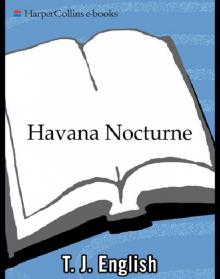 Havana Nocturne
Havana Nocturne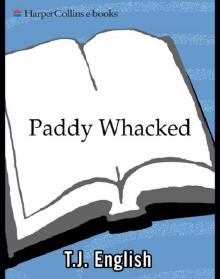 Paddy Whacked
Paddy Whacked American Gangsters
American Gangsters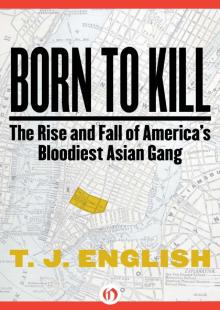 Born to Kill
Born to Kill Westies
Westies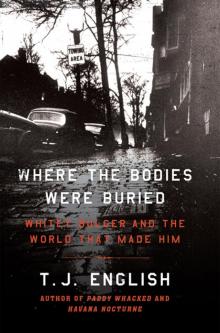 Where the Bodies Were Buried
Where the Bodies Were Buried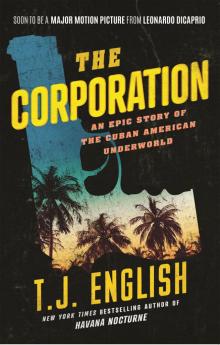 The Corporation
The Corporation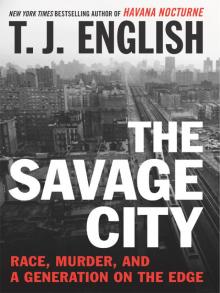 The Savage City
The Savage City